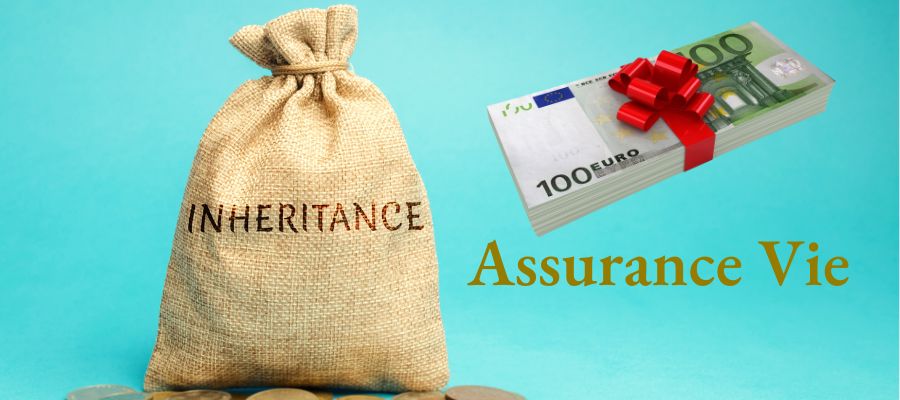When it comes to investing in assurance vie for inheritance planning, the focus is often on the very generous inheritance benefits applied to policies where sums are invested before the age of 70. I am often asked by clients ‘is it worthwhile investing in assurance vie after the age of 70?’ The answer is ‘most definitely YES!’
Assurance Vie & inheritance planning
By Sue Regan
This article is published on: 9th August 2024
As a change from the norm, this article focuses mainly on the inheritance benefits of assurance vie investment beyond the age of 70.
As already stated, it is often a misconception that investing in assurance vie for inheritance planning is only attractive for people under age 70. Undoubtedly, investing before age 70 has very attractive inheritance benefits, but there are also valuable inheritance planning opportunities for sums invested after age 70 which should not be overlooked.
As a reminder, an assurance vie policy is “outside the estate”, according to Article L132-12 of the Insurance Code. This means that in the event of the death of the insured, the capital does not go to the heirs within the meaning of the Civil Code but to the named beneficiary(ies) of the assurance vie policy.
Sums invested into assurance vie beyond the age of 70 have an inheritance allowance of €30,500 and a exemption from gains on the total sum(s) invested. The choice of beneficiary is completely unrestricted and the allowance (and profit) is shared by all beneficiaries in the proportion to which they have been nominated. If you have existing policies that were funded before age 70 the €30,500 allowance is in addition to the €152,500 per beneficiary granted with pre-age 70 premiums.
It’s probably worth highlighting here that a notable difference between the pre-age 70 allowance and the post-age 70 allowance is that the €152,500 allowance includes both the premiums paid on the policy and the gains on these premiums, whereas the €30,500 allowance relates to the amount of capital invested and all gains across the whole policy are exempt from IHT.

It is perfectly possible to add sums to an existing policy after the age of 70 and the insurance company will calculate the benefit payable on death of the life assured in accordance with when premiums were invested. However, taking out a new policy after the age of 70 has the advantage of:
- Differentiating between sums paid before and after age 70 and therefore simplifying the tax calculation
- Provides an opportunity to nominate beneficiaries that are different from those nominated in other policies
- Designate different policies for different purposes
It is worth noting that there is no limit to the number of assurance vie policies that can be taken out but the IHT allowances apply across all policies of a particular life assured (i.e. the allowances are not per policy).
Let’s take the example of a couple who are living together but have no ‘legal’ relationship (i.e. not married or PACS’d):
– A 70-year-old makes a will in favour of his/her partner. Under standard French inheritance rules the surviving partner is entitled to an IHT allowance of just €1,564 on any assets received via the will, and above that will have to pay IHT at the rate of 60%.
– If the deceased had nominated his/her partner as the sole beneficiary of an assurance vie policy opened after the age of 70, the surviving partner would then benefit from an IHT allowance of up to €30,500 and an exemption from IHT on all the gains and interest on the policy.
Exceptions as to who shares the €30,500 tax-free allowance
Beneficiaries who are exempt from inheritance tax are not taken into account to divide the overall allowance of €30,500. Exempt beneficiaries include spouses and PACS’d partners.
Thus, if the spouse of the deceased is named as one of the beneficiaries of the policy, his/her share will not be taken into account when dividing up the €30,500 allowance, which will only be divided amongst any other named beneficiaries, meaning their exempt share will increase.
If, after applying the exempt allowances, there remains a taxable element of capital invested, this can be offset against the standard inheritance allowances determined by the degree of kinship.

The potential growth in value of an assurance vie policy makes investing after age 70 attractive
Let’s look at a couple of examples:
Example 1
A premium of €30,500 is invested at the age of 70, the insured person dies at the age of 87.
For 17 years, the policy grows at an average rate of 2% per year, net of fees. At the end of 17 years the gain in value is €12,339, thus a total of €42,839 is passed tax-free to the beneficiaries. At 3% per year, the amount of gain after 17 years represents €20,259 meaning a total of €50,759 passes free of IHT. If the €30,500 had been left on deposit with interest added at a similar rate the capital and interest would fall into the estate and be subject to the standard IHT rules.
Example 2
A premium of €100,000 is invested at age 70 and the life assured dies at the age of 90, i.e. 20 years later. The beneficiaries are the life assured’s two children in equal shares.
Taking an average growth rate of 4% per year, the €100,000 becomes €222,258 after 20 years. Each child receives €111,129. This is in addition to anything they may receive from a pre-age 70 policy. €30,500 of the capital and all gains are exempt, therefore the only taxable element for each child is €34,750 (€69,500 / 2). This can be offset against the standard IHT allowance of €100,000 per parent per child if this is not used up elsewhere.
Example 3
A nephew receives €55,000 from an assurance vie policy taken out by his uncle when he was over 70 years old.
The premiums paid amounted to €40,000, the gain was €15,000. €30,500 of the premiums paid and the gain of €15,000 are exempt.
Therefore, the potentially taxable element is €9,500 (€40,000 – €30,500). However, this can be offset against the inheritance allowance between uncle and nephew of €7,967. Assuming the allowance is fully available the taxable element is €1,033 (i.e. €9,000 – €7,967) at the rate of 55%. IHT of €568 is payable (i.e. €1,033 X 55%).
The outcome, €55,000 was transferred via an assurance vie opened after the age of 70 to a nephew who pays only €568 in IHT instead of €25,868 if the legacy had not been wrapped in assurance vie (i.e. €55,000 – €7,967 = €47,033 x 55%).
In summary, if your situation allows, it is definitely worthwhile considering investing in assurance vie after the age of 70 in order to take advantage of the additional €30,500 allowance and exemption on the total gains on investment which, in some cases, could be higher than the capital invested. Not forgetting, of course, that you retain control of the policy and can spend it or change the beneficiaries whenever you wish.
If you would welcome a chat about whether investing in assurance vie is right for you or would simply like a review of your financial situation you can contact me at sue.regan@spectrum-ifa.com or call me on +33 6 89 20 32 47


